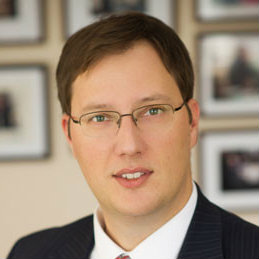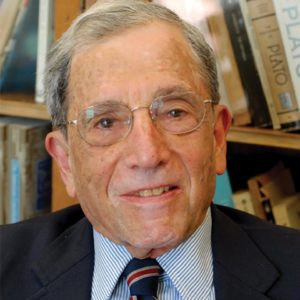Varieties of American Conservatism
Discover the intellectual roots of modern conservatism.
July 21 – July 27, 2019
Washington, DC
When Justice Brett Kavanaugh took the bench in October 2018, it marked the culmination of the Republican Party’s decades-long quest to secure a conservative majority on the Supreme Court.
How will the new majority affect constitutional law? Justice Kavanaugh’s confirmation brings to the forefront divisions within the conservative legal movement that have existed for decades. In this course, students will explore the debates and disagreements among conservatives and libertarians over how to best understand the Constitution generally and the judicial power specifically. We will consider debates over originalism, natural law, traditionalism, and the burgeoning debate between advocates of “judicial restraint” and advocates of “judicial engagement.” To that end, we will read not just modern authors but also their historical antecedents.
This course will consist of two sessions per day over a one-week period. Each morning, students will participate in seminar discussion led by legal expert Adam White. Each afternoon, they will hear from a leading scholar or practitioner on that individual’s area of expertise. Past guest speakers have included Hadley Arkes (James Wilson Institute), Randy Barnett (Georgetown Law School), Alan Gura (Gura PLLC), Carrie Severino (Judicial Crisis Network), and Ed Whelan (Ethics and Public Policy Center), among others.
Image courtesy The White House
Adam J. White on the conservative legal movement
This one-week course will take place in Washington, DC. It is a full-time commitment for Monday–Friday, with required sessions in the morning, afternoon, and some evenings.

Adam J. White is the Laurence H. Silberman Chair in Constitutional Governance and senior fellow at the American Enterprise Institute, where he focuses on the Supreme Court and the administrative state. Concurrently, he codirects the Antonin Scalia Law School’s C. Boyden Gray Center for the Study of the Administrative State.

Adam J. White is the Laurence H. Silberman Chair in Constitutional Governance and senior fellow at the American Enterprise Institute, where he focuses on the Supreme Court and the administrative state. Concurrently, he codirects the Antonin Scalia Law School’s C. Boyden Gray Center for the Study of the Administrative State.
Mr. White practiced constitutional and administrative law, particularly in the regulation of energy and financial markets. He started his legal career as a law clerk for Judge David B. Sentelle at the US Court of Appeals for the DC Circuit.
Mr. White has testified often before Congress, including before the Senate’s Committees on the Judiciary; Commerce, Science, and Transportation; and Homeland Security and Governmental Affairs and before the House’s Judiciary and Financial Services Committees. In 2018, the Senate Committee on the Judiciary called him to testify in Brett Kavanaugh’s Supreme Court confirmation hearings to advise senators on Kavanaugh’s approach to administrative law.
In 2021, he served on the Presidential Commission on the Supreme Court of the United States, where he criticized “Court packing” and other efforts to restructure the Supreme Court. In 2017, he was appointed to serve on the Administrative Conference of the United States. He also serves on the leadership council for the American Bar Association’s Administrative Law and Regulatory Practice Section, which he will chair in 2023–24. Before joining AEI, he was a research fellow at Stanford University’s Hoover Institution and an adjunct fellow at the Manhattan Institute.
Mr. White has a JD from Harvard Law School and a bachelor of business administration from the College of Business at the University of Iowa.
Recommended Reading:
To learn more about other important figures in constitutional law, we encourage you to visit ContemporaryThinkers.org, a website covering the ideas and influence of pioneering intellectuals of the twentieth and twenty-first centuries. Sponsored by the Hertog Foundation, ContemporaryThinkers.org includes sites devoted to Walter Berns, Martin Diamond, Herbert Storing, and many others.
Readings:
Discussion Questions:
Readings:
Discussion Questions:
Readings:
Discussion Questions:
Readings:
Discussion Questions:
Readings:
Discussion Questions:

Matthew Continetti
Matthew Continetti is the director of domestic policy studies and the inaugural Patrick and Charlene Neal Chair in American Prosperity at the American Enterprise Institute (AEI), where his work is focused on American political thought and history, with a particular focus on the development of the Republican Party and the American conservative movement in the 20th century.

Adam J. White
Adam J. White is the Laurence H. Silberman Chair in Constitutional Governance and senior fellow at the American Enterprise Institute, where he focuses on the Supreme Court and the administrative state. Concurrently, he codirects the Antonin Scalia Law School’s C. Boyden Gray Center for the Study of the Administrative State.

Daniel DiSalvo
Daniel DiSalvo is a Senior Fellow at the Manhattan Institute’s Center for State and Local Leadership and an Assistant Professor of Political Science at The City College of New York-CUNY. His scholarship focuses on American political parties, elections, labor unions, state government, and public policy.

Ralph Lerner
Ralph Lerner is the Benjamin Franklin Professor Emeritus in the College and professor emeritus in the Committee on Social Thought at the University of Chicago. He is the author, most recently, of Naïve Readings: Reveilles Political and Philosophic (University of Chicago Press).